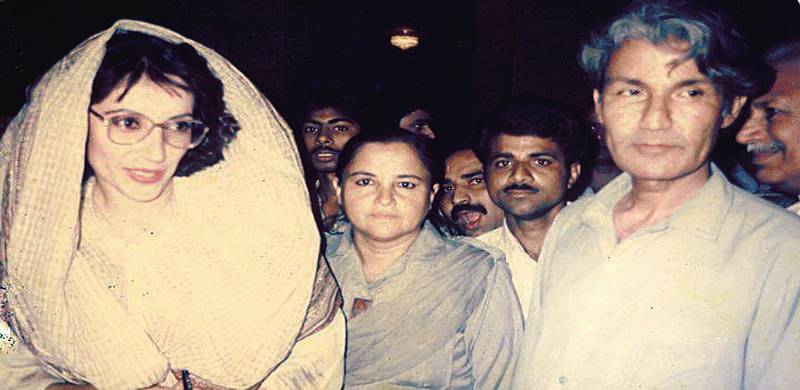
The CPP was formed in 1948, months after the creation of Pakistan in August 1947. It was largely shaped by the Muslim members of the Communist Party of India (CPI) that had supported the movement for the creation of Pakistan[1] led by the head of the All India Muslim League (AIML), Muhammad Ali Jinnah.
Many Muslim CPI cadres had joined AIML in the early 1940s after denouncing the Indian Congress Party (INC) as a party of ‘bourgeoisie capitalists’.[2] Like the CPI, the CPP too was a ‘Stalinist’ outfit. It had theorized that the new state of Pakistan was ripe for a revolution and the party was to facilitate the creation of a socialist state.[3]
Progressive writer and intellectual Sajjad Zaheer was elected the party’s first general secretary. Between 1948 and 1951, the CPP managed to organize some of Pakistan’s first labour and trade unions and peasant organizations. By 1950 the CPP had become the second largest party in the country behind the Muslim League,[4] especially in Karachi, Lahore and Dhaka.
However, things began to fall apart after the party was accused of being part of an aborted military coup attempt against the Liaquat Ali Khan regime. The coup was being planned by Major-General Akbar Khan. Khan was accused of inciting a mutiny in the Pakistan armed forces and enlisting various leading members of the CPP.
The senior leadership of the party was arrested, tried and thrown in jail along with the rebel officers. The government initiated a harsh crackdown against the party and three years later in 1954, it was banned. The party immediately went ‘underground’ and it remained there, mainly working through various ‘front organizations.’
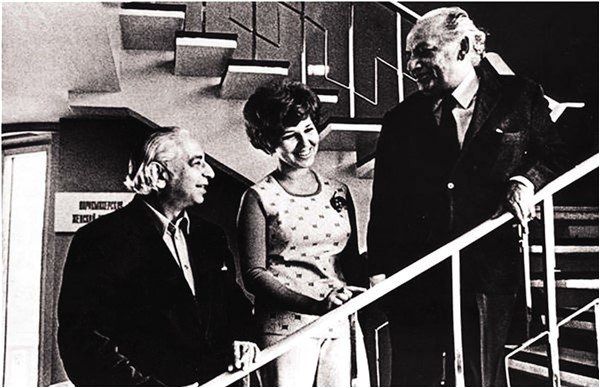
(From Left): CPP’s first general secretary, Sajjad Zaheer; Russian scholar, Dr. Ludmila Vassilieva; and progressive Urdu poet, Faiz Ahmad Faiz, who was also a member of the CPP. After the 1951 aborted coup attempt, Zaheer was deported to India and Faiz was thrown in jail.
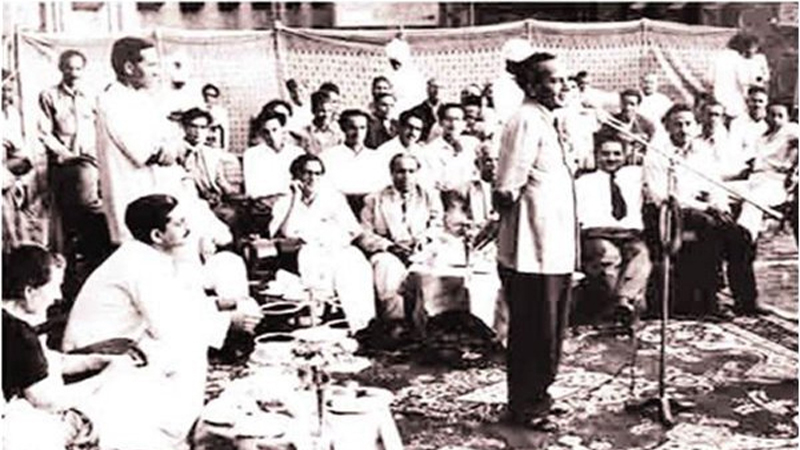
Faiz addressing a CPP gathering in Lahore, 1950.
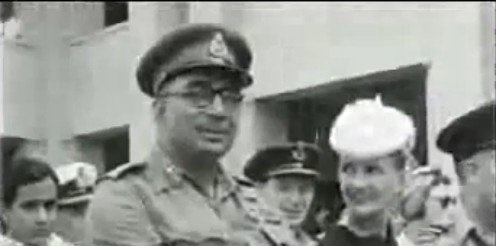
Major-General Akber Khan. His wife Nasim had links with the CPP which helped him gain the support of the party.
Azad Pakistan Party (APP)
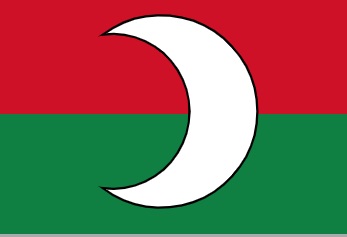
APP was formed in 1949 by Mian Iftikharuddin who hailed from a well-to-do landed family from Punjab. He was a member of Indian National Congress but later joined Jinnah’s All India Muslim League (AIML). Jinnah made him the Punjab president of the Muslim League after Pakistan’s creation in 1947 and a minister. Mian Iftikhar was a prominent member of the League’s progressive wing.
However, he had a falling out with the party’s conservative wing after Jinnah’s demise in 1948 when the party turned down his proposal of initiating radical land reforms. Mian Iftikhar broke away from the party and formed APP which advocated democratic-socialism. He also launched Pakistan Progressive Papers which owned various progressive newspapers and magazines.
APP’s appeal remained limited, though. In 1957, Mian Iftikhar initiated the formation of a broad-based progressive party and merged APP with seven other parties to form the National Awami Party (NPP). He passed away in 1962. He was just 54.
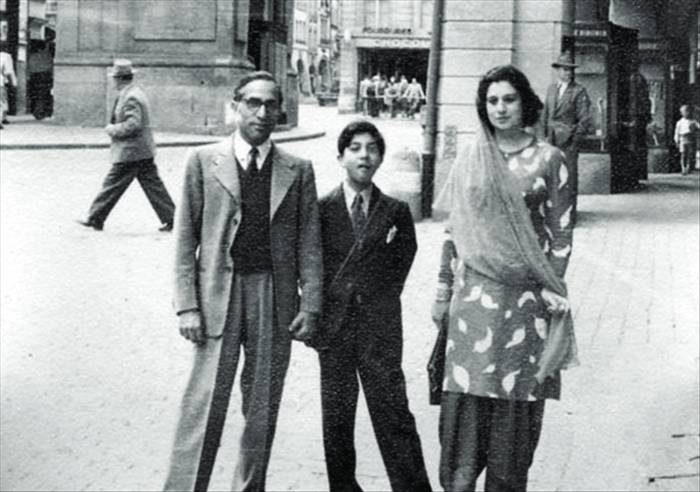
Mian Iftikhar with wife Ismat and son.

Faiz Ahmad Faiz holds a staff meeting at the offices of the Pakistan Times. The paper was owned by Mian Iftikharuddin. Faiz was its first editor.
Ganatantri Dal (GD)
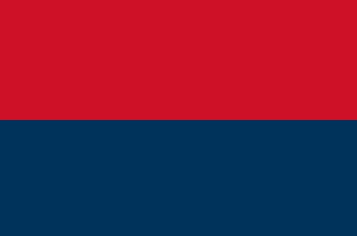
GD was formed in 1953 by Mahmud Ali and Haji M. Danish both of who had been members of the All India Muslim League (AIML). Both men were Bengalis and maintained links with left-wing peasant groups in East Pakistan.[5]
After accusing the League of imposing Urdu as Pakistan’s national language and ignoring Bengali, Ali broke away to form GD.
He formed the party with the communist sympathizer, Danish. Danish had already quit the League after refusing to stop supporting peasant movements in East Pakistan. GD did well as a member of the United Front during the 1954 provincial election in East Pakistan in which the Muslim League was routed.
In 1957, GD merged with seven other parties to form the National Awami Party (NAP).
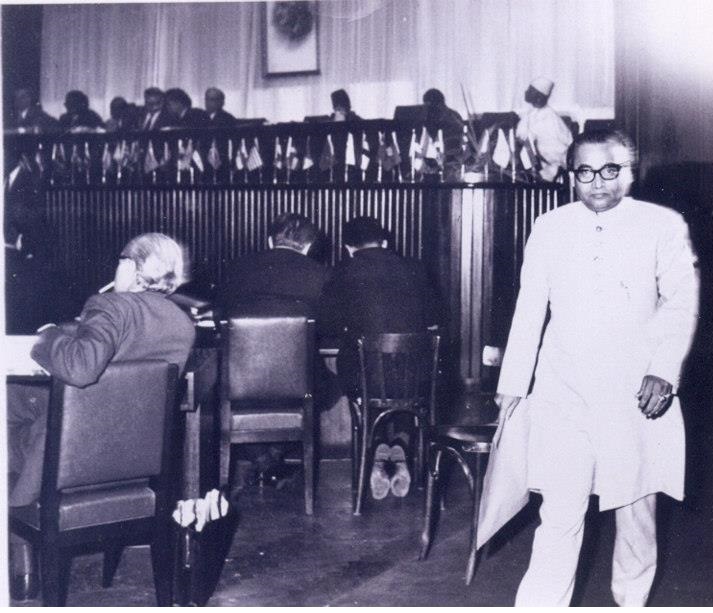
Mahmud Ali.
Democratic Students Federation (DSF)
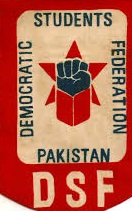
DSF was formed as a ‘front organization’ of the Communist Party of Pakistan (CPP). By 1952 it had become West Pakistan’s largest student organization. DSF successfully agitated for the betterment of universities and colleges and in 1953 it forced the government to begin construction of a brand new campus of the Karachi University. But during the agitation over a dozen members of DSF were shot dead by the police.[6]
In 1954 DSF was banned along with its mother party, the CPP. The outfit was revived in 1977 and then reorganized in 1982. It took part in various movements against the Gen. Zia dictatorship (1977-88) before withering away.
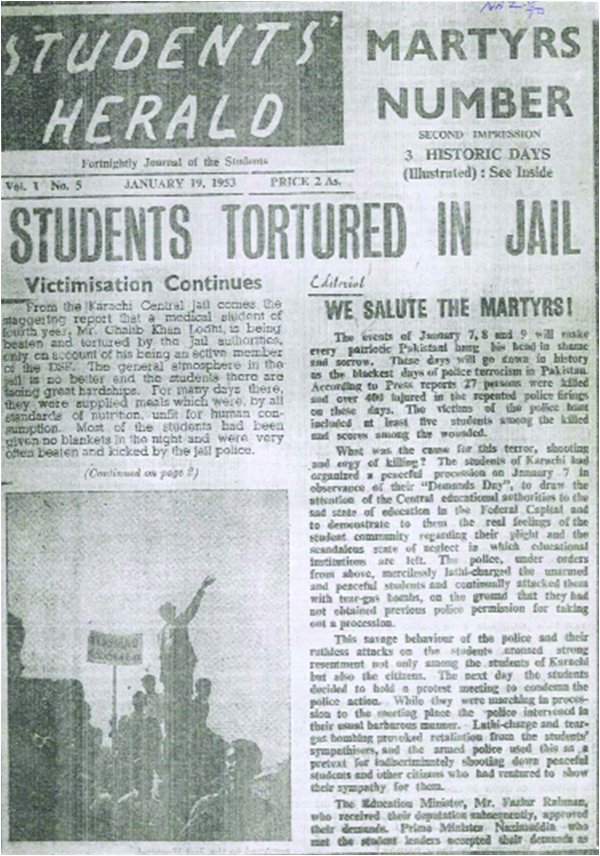
January 1953 issue of DSF’s mouthpiece, the Students Herald.
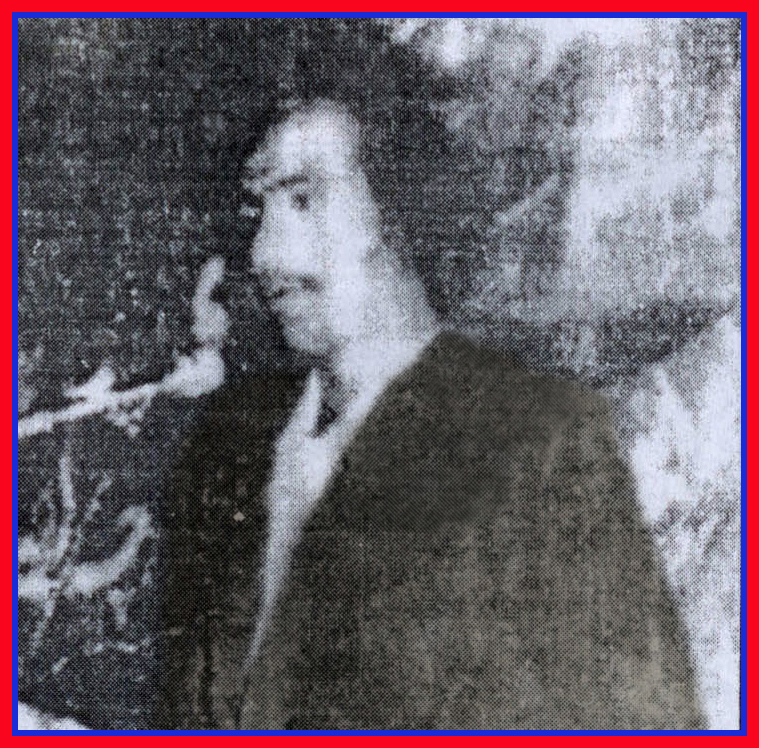
Nazir Abbasi who helped re-launch DSF in 1977 was tortured to death by the Zia dictatorship in 1980. He was just 28.
National Students Federation (NSF)
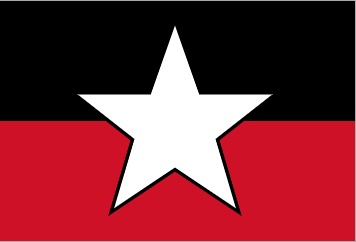
NSF was formed in 1955 as a pro-government student group to address the growing leftist sentiments on the country’s campuses.[7] But it was soon ‘infiltrated’ by former DSF members who completely changed the ideological disposition of the party.[8] It became a board-based student outfit comprising communists, socialists, and left-liberal youth.
By 1958 NSF had grown to become one of the largest student outfits in West Pakistan. In 1962 it successfully agitated to force the Ayub Khan regime to revoke some of the education policies that the government had announced and which NSF termed as ‘anti-students.’
In 1963 NSF came close to the left-wing National Awami Party (NAP) and also engaged with various left-wing labour unions. In 1967, NSF split into various factions. The pro-China factions allied with ZA Bhutto’s Pakistan People’s Party (PPP) whereas the pro-Soviet factions remained close to NAP.
In 1968, NSF was in the forefront (in West Pakistan) of the violent protest movement against the ‘pro-West’ Ayub Khan regime, accusing it of promoting ‘crony capitalism.’ In 1971 during the civil war in East Pakistan, the pro-China factions of the NSF backed the state’s military action against Bengali separatists whereas the pro-Soviet factions opposed it.
In 1973 NSF fell out with the PPP, two years after the PPP came to power. NSF lost its electoral influence at colleges and universities and began to join progressive student alliances. NSF was active against the Gen. Zia dictatorship. But by the late 1980s its influence and size had significantly diminished.
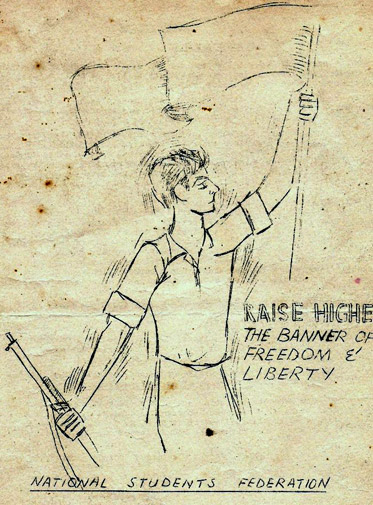
A 1958 NSF poster.

NSF members at Karachi’s Dow Medical College during the anti-Ayub movement in late 1960s.
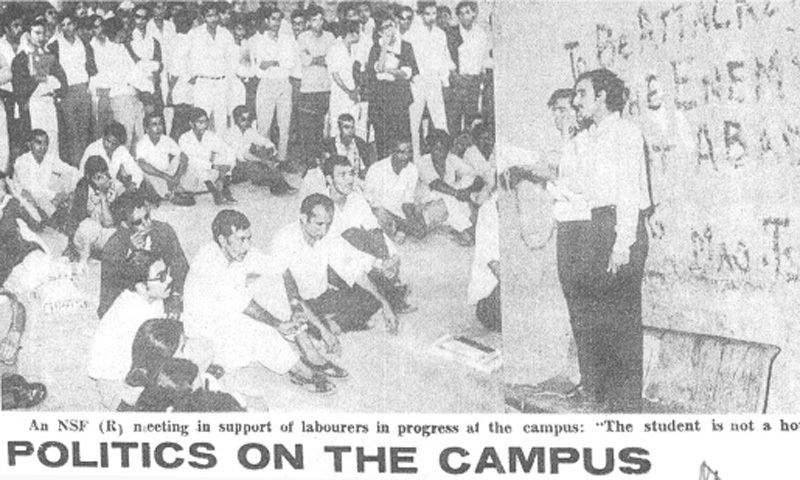
NSF campaigning for the 1974 student union elections at the Karachi University.
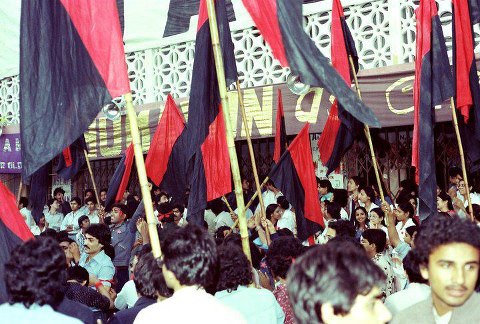
An NSF rally in Karachi in 1982.
National Awami Party (NAP)
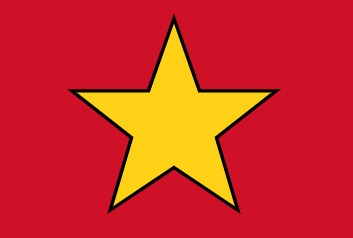
In 1957 eight parties merged to form NAP. The parties were: the democratic-socialist Azad Pakistan Party; the Awami League (Bhashani Group); the democratic-socialist Ganatantri Dal; the progressive Sindhi ethno-nationalist Sindh Mahaz; the pro-peasant Sindh Hari Committee; the progressive Pashtun ethno-nationalist Wrore Pakhtun; the Baloch ethno-nationalist Awam Jamat; and the left-leaning Pashtun ethno-nationalist Khudai Khidmatgar.
A large number of former Communist Party of Pakistan (CPP) members and supporters also joined NAP. Despite the fact that all political parties were banned after the 1958 military coup by Ayub Khan, NAP remerged as the country’s largest left-wing party when the ban was lifted in 1962.
NAP stood for democracy, socialism and provincial autonomy for East Pakistan, Sindh, Balochistan and NWFP (present-day Khyber Pakhtunkhwa). During the 1965 presidential election, NAP supported Ms. Fatima Jinnah.
In 1967, NAP splintered into two factions. The pro-Soviet faction became NAP-Wali and the pro-China faction became NAP-Bhashani. NAP-Wali played an active role during the 1968 protest movement against the Ayub regime.
NAP-Wali won the majority of provincial assembly seats in NWFP and Balochistan during the 1970 election. It formed provincial governments in the two provinces in 1972.
In 1973 the PPP/Bhutto regime dismissed the Balochistan government after accusing NAP of ‘facilitating Baloch separatists.’ In 1974 the NAP-led coalition government in NWFP resigned in protest.
In 1975, after a PPP minister was killed in an explosion at the Peshawar University, the Bhutto regime accused NAP. The regime imposed a ban on the party, a decision that was upheld by the courts.[9]
In late 1977, NAP reemerged as the National Democratic Party (NDP) which became part of a 9-party electoral alliance against the ruling PPP. Ironically, the alliance was dominated by religious parties that had originally opposed NAP. NDP fully participated in the 1977 anti-PPP movement and initially supported the reactionary military coup against Bhutto in July 1977.[10]
NDP was dissolved in the early 1980s and in 1986 NAP was reenacted as Awami National Party (ANP).
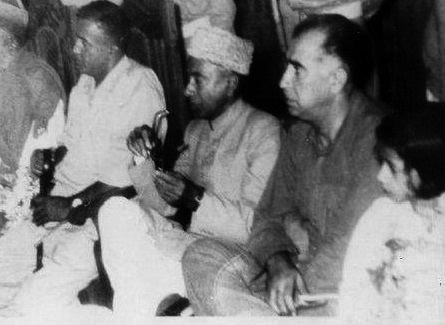
1957, NAP is formed. It included ethno-nationalist heavyweights such as Bacha Khan, Wali Khan, Samad Achakzai, GM Syed, Maulana Bhashani, and Ghaus Bakhsh Bizinjo.
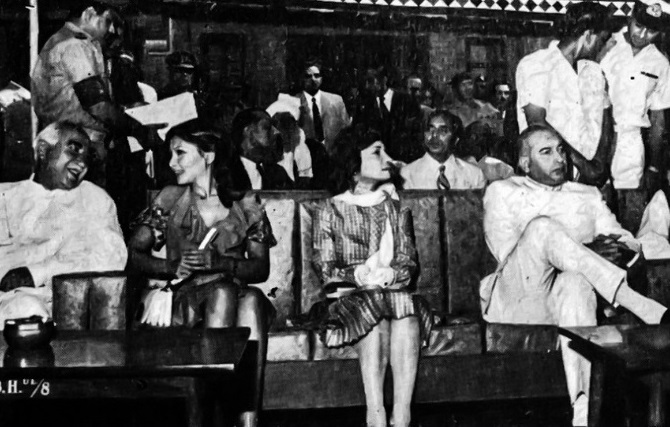
Poles apart: NAP leader Ghaus Bakhsh Bizinjo (left) and PM Bhutto (right) in Quetta, weeks before Bhutto dismissed the NAP government in 1973.

Treason case against NAP leaders being held in 1976.
Pakistan People’s Party (PPP)
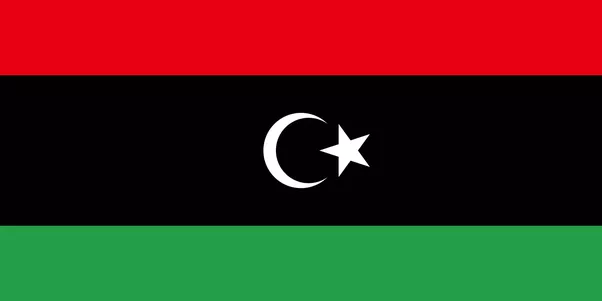
ZA Bhutto was a dynamic young minister in the Ayub Khan cabinet. But he had a falling out with Ayub in 1966 and was eased out. Feeling alienated, Bhutto tried to join National Awami Party (NAP).[11] Unable to be accommodated in NAP, Bhutto befriended veteran Marxist ideologue, JA Rahim.
Rahim convinced him to launch his own party. In 1967 Bhutto launched the PPP with Rahim. The party was conceived as a broad-based progressive democratic party. It had three prominent wings. Its left wing consisted of leftist student, peasant and labour leaders; and socialist and Marxist ideologues; the centrist wing was dominated by liberal and social democrats and ‘Islamic socialists.’ On the right were ‘progressive’ members of the landed elite.
Most factions of the NSF aligned themselves with the PPP. The party called for a democratic system, a socialist economy and progressive social policies. The PPP played an aggressive role during the 1968 protest movement against the Ayub regime.
The party swept the 1970 elections in West Pakistan’s two largest provinces, Punjab and Sindh. However, its presence in East Pakistan was negligible. In 1971, the party supported the Pakistan military’s operation in East Pakistan.
After East Pakistan succeeded in breaking away (to become Bangladesh) a group of military officers forced Gen Yahya Khan to resign and hand over power to Bhutto’s PPP. The party formed the government in the centre and in Punjab and Sindh.
A new constitution was authored and passed in 1973 and Bhutto became prime minister. He had taken over as president. His government nationalized various industries and also initiated some land reforms. But by 1974 the regime had become autocratic. It also introduced some controversial amendments in the constitution.
The regime began another round of nationalization and land reforms in 1976 which managed to help the party retain its appeal among the peasants and the urban working classes. But the policies attracted a severe backlash from the business community, industrialists and the growing urban middle and lower-middle classes.[12]
These reservations erupted in the form of a protest movement in 1977 in urban Pakistan after which the PPP regime was toppled in a reactionary military coup in July 1977. In April 1979, Bhutto was hanged by the Gen Zia dictatorship for ordering a murder in 1974. The judgment was reached through a highly controversial trial.
The party reins were taken over by Bhutto’s widow Nusrat and daughter Benazir. The PPP led at least three major movements against Zia (1981, 1983 and 1986) but failed to dislodge him. In August 1988, Zia died in a plane crash. Sabotage was suspected. During the first post-Zia election, the PPP won a majority and formed the party’s second government. Benazir became PM.
The PPP’s ideological disposition rapidly evolved under Benazir. It increasingly became a left-liberal party, especially during its third stint in power (1993-96). After the highly charged atmosphere of politics in 1990s that was besieged by a three-way struggle between the PPP, the PML-N and the military-establishment, Benazir was forced into exile after the 1999 Gen Musharraf coup.
In 2007 when the Musharraf dictatorship was crumbling, Benazir returned to Pakistan but was killed in a terrorist attack. Her husband Asif Ali Zardari led the party to win the 2008 election and form the party’s fourth government.
The party adopted a highly pragmatic approach under Zardari, but badly lost the 2013 election. From 2016 onwards, the party is increasingly being handed over to Benazir’s son, Bilawal Bhutto-Zardari, who is attempting to reinvigorate the party’s ideological disposition with a fusion of social democracy and modern liberalism.
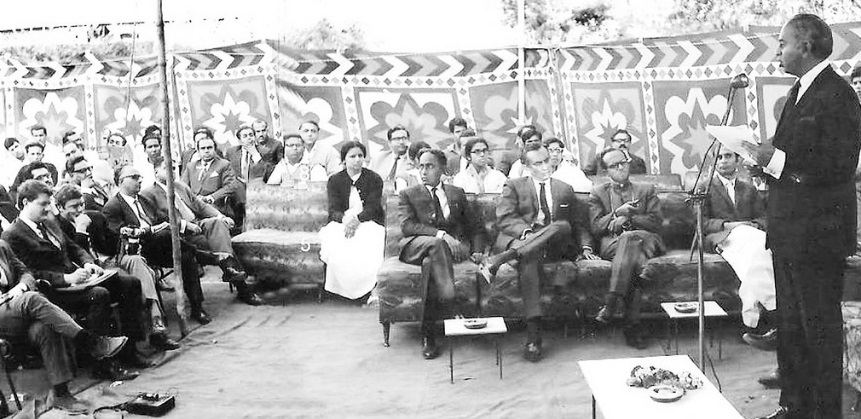
The formation of the PPP, 1967.
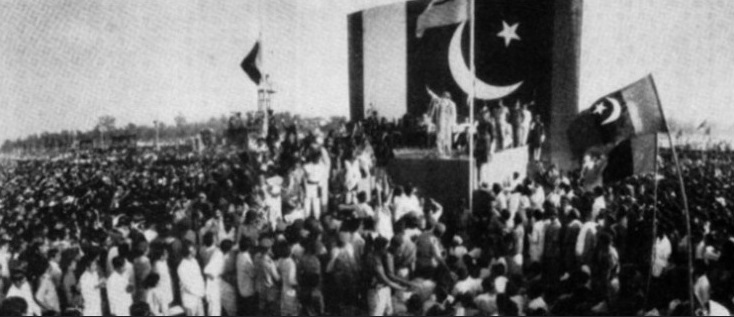
Bhutto takes oath as PM in public in 1973.
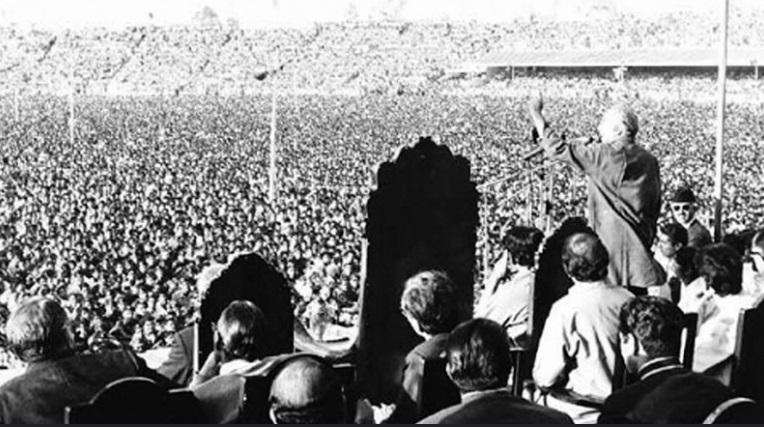
After being toppled in a military coup, Bhutto held a massive rally in Lahore. In it he promised to hang the coup-makers on his return to power. The very next day he was arrested again by the military regime, tried for murder and hanged in 1979.
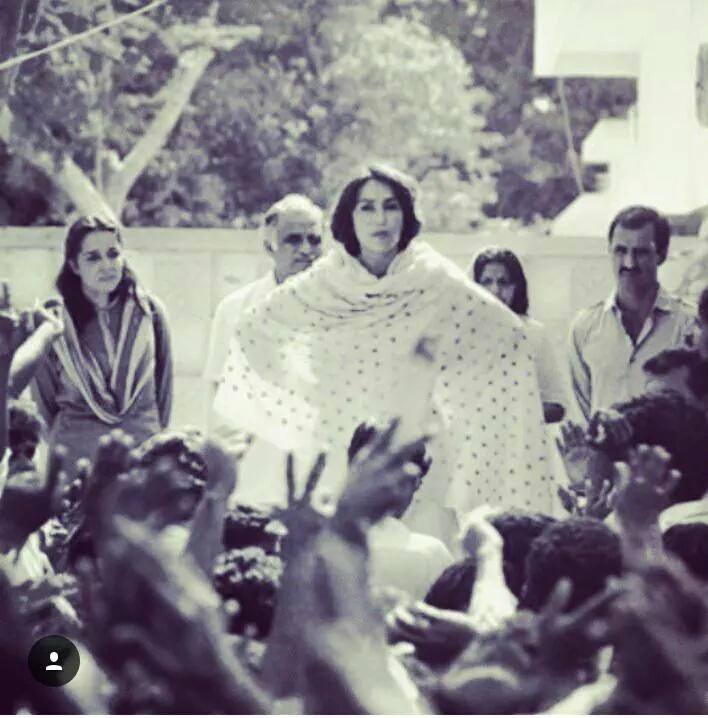
Benazir Bhutto led the PPP after her father’s execution. She led three major movements against the Zia dictatorship.
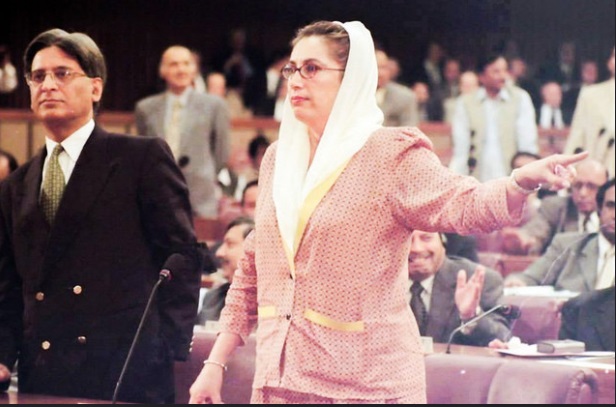
Benazir was elected twice as PM (1988, 1993). She became the first ever PM of a Muslim-majority country.
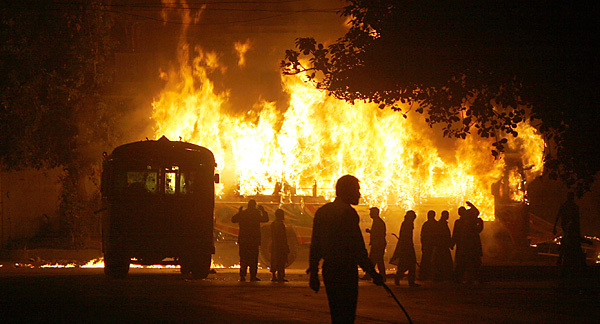
Countrywide riots broke out after Benazir was assassinated in 2007.
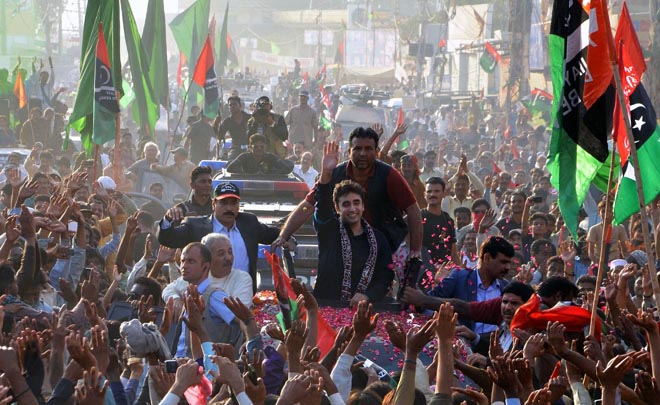
Bilawal Bhutto-Zardari.
Peoples Students Federation (PSF)
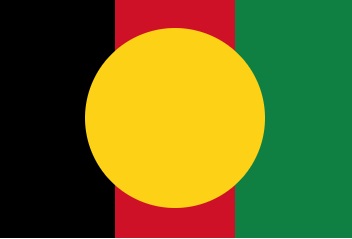
Formed in 1972. Student-wing of the PPP.
Mazdoor Kissan Party (MKP)
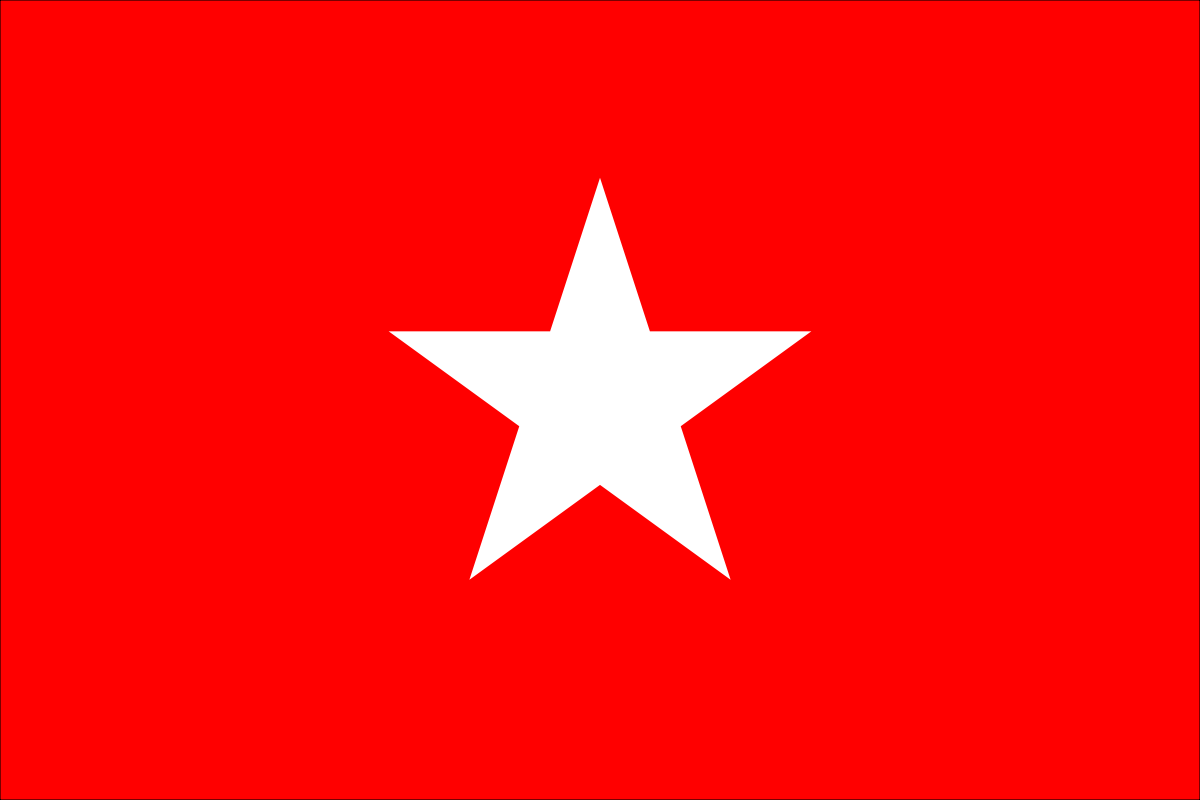
In 1967 National Awami Party (NAP) split into two factions: the pro-Soviet NAP-Wali and the pro-China NAP-Bhashani. In 1968 another splinter group emerged from NAP-Wali. It called itself, the Mazdoor Kissan Party (MKP).
MKP was not a conventional party. It denounced democracy as a ‘bourgeoisie concept’ which could not improve the condition of peasants and the working-classes. The party elected Afzal Bangash as party chief. Bangash was a former member of the Communist Party of Pakistan (CPP) and had been associated with NAP since its formation in 1957.
MKP was inspired by the 1949 Chinese Revolution led by Mao Tse Tung and decided to launch a militant movement against the landed elite of the country. In 1970, Ishaq Muhammad, a former major in the Pakistan army joined MKP. Ishaq had been arrested in 1951 for being a fellow conspirator in that year’s aborted coup attempt by Major-General Akbar Khan against the Liaquat Ali government.[13]
MKP began training and arming peasants in NWFP’s Charsadda District. By 1972-73, MKP guerillas had taken over large swaths of land by driving away the landowners. The land was distributed among the peasants.
MKP entered into a direct armed conflict with the NAP-led provincial government in NWFP. MKP described NAP-Wali as a ‘fake socialist party’ and accused it of looking after the interests of the landed elite. The NAP on the other hand accused the PPP government in Islamabad for backing MKP to destabilize the NAP set-up in NWFP.
After enjoying successes in NWFP, MKP tried to take its fight to the impoverished areas of South Punjab. But here it was decimated by the PPP regime which then eradicated it in NWFP as well after the NAP-led government in NWFP resigned in 1974.
In 1975 Bangash and Ishaq parted ways and MKP split into three factions, none of which ever picked up arms again.
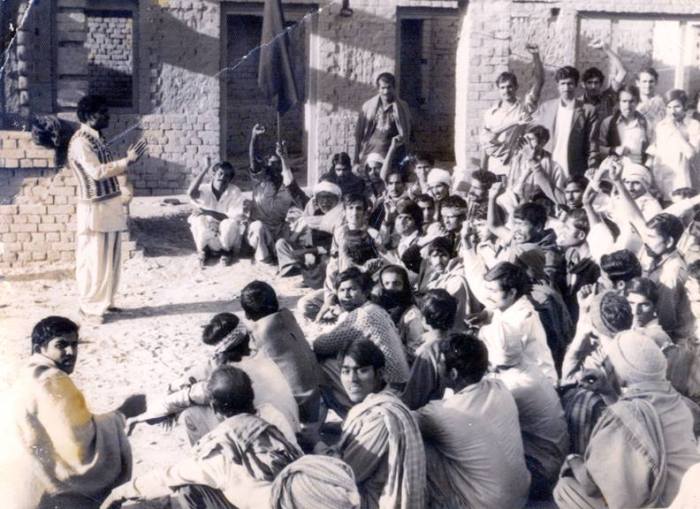
1972: A MKP cadre instructing peasants on the ways of Maoism.
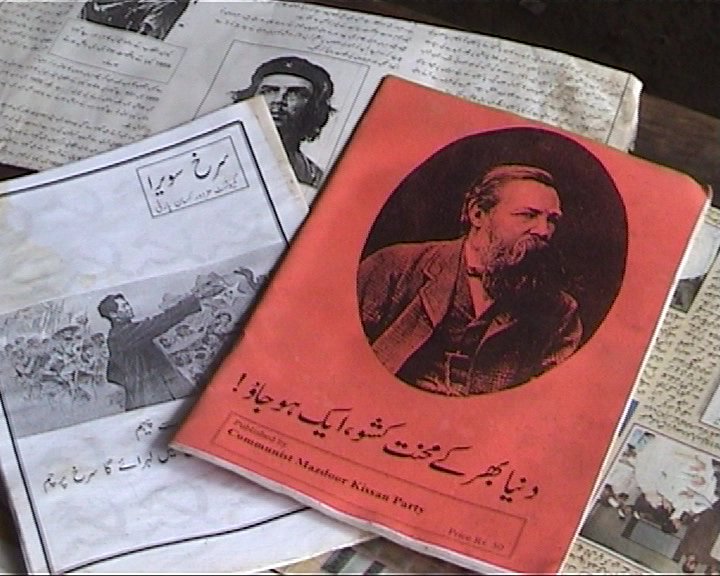
Communist literature translated into Urdu was used for indoctrination purposes by MKP.
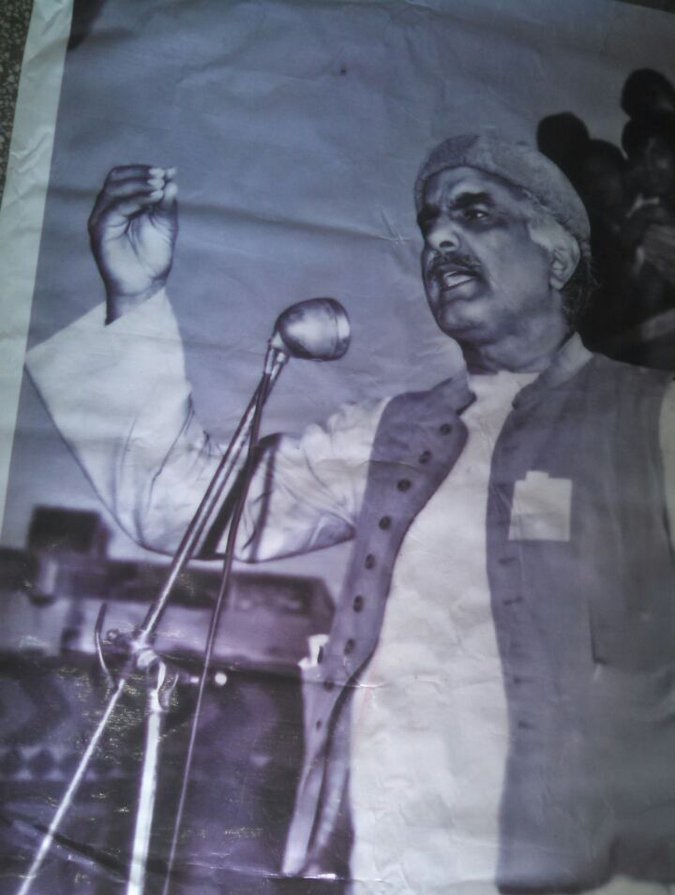
Ishaq Muhammad.
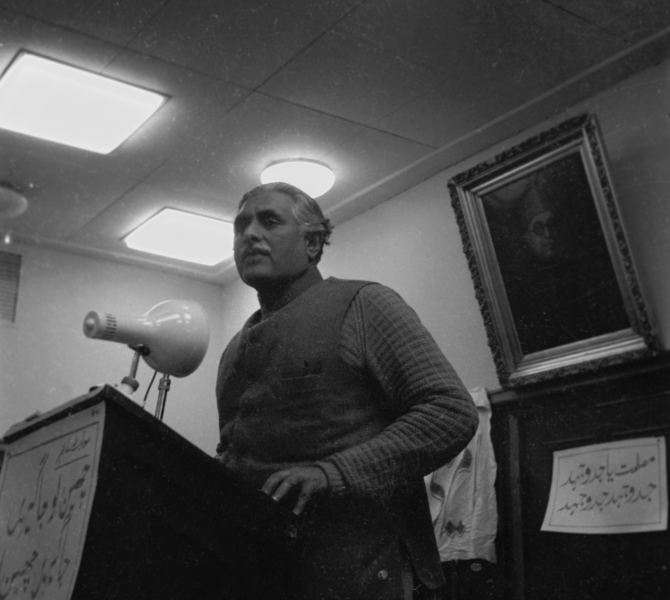
Afzal Bangash.
Baloch Students Organization (BSO)
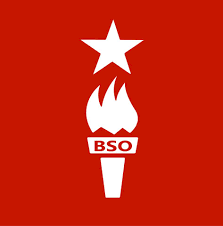
BSO has been around since 1967 and has continued to be an active and important player in the topsy-turvy sphere of Baloch nationalist politics. And even though over the decades it has experienced its share of splintering, almost all of its factions remain to be perhaps the most articulate and consistent factors in the volatile politics of Balochistan and within the series of Baloch nationalist uprisings that this province has (and is still) witnessing in the last many decades.
Nevertheless, it can be quite perplexing for an outsider to figure out the rather complex nature of Baloch politics, what with all the competing, cooperating and then competing again Baloch nationalist parties and organizations and their many factions and splinter groups.
BSO was conceived as an independent student outfit to safeguard the academic and political interests of Baloch students in the educational institutions of the Balochistan province and in Karachi.
BSO’s rapid growth and its leftist orientation saw it working closely with the Baloch leadership in the National Awami Party (NAP). BSO’s politics remained largely peaceful till the eruption of the third Balochistan insurgency in 1973.
In a two-pronged strategy, a majority of BSO leaders stayed put in Balochistan and at Karachi’s college and university campuses to propagate the ‘Baloch struggle,’ while its more militant members helped revive the Balochistan Liberation Front (BLF) – a Baloch separatist guerrilla outfit that had been active during the 1962 Baloch insurgency.
After the Balochistan insurgency withered away in 1977, BSO remained rooted as the leading student organization on Balochistan’s campuses where it not only began a series of protests against the Zia dictatorship, but also denounced the US and Saudi backed Mujahedeen insurgency in Afghanistan against Soviet troops.
Today there are at least five BSO factions with one of them which still advocate’s armed militancy against the Pakistani state for an ‘independent Balochistan.’
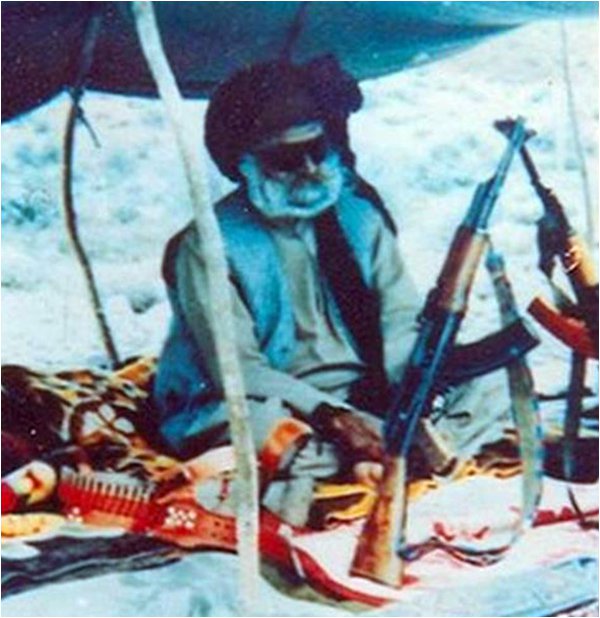
Baloch guerilla leader, ‘General Sheroff’ in the 1970s.
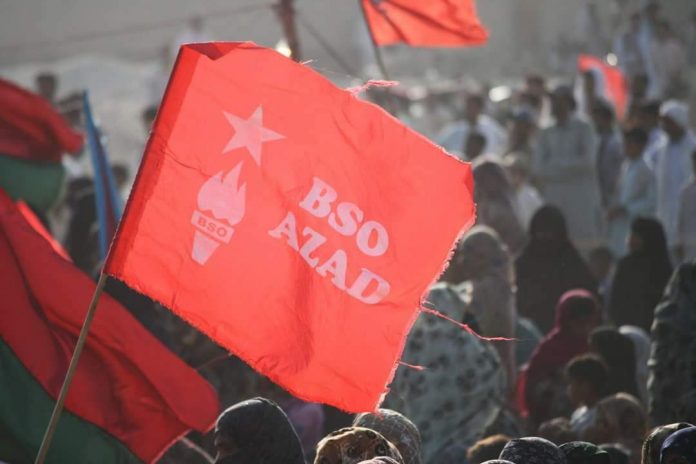
A recent protest rally by a militant BSO faction.
Al-Zulfikar Organization (AZO)
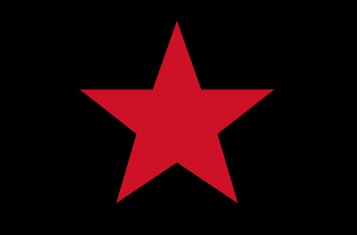
AZO was a left-wing urban guerrilla outfit formed in 1979 by Murtaza and Shahnawaz Bhutto, sons of former Pakistan PM, ZA Bhutto. AZO was conceived to become a catalyst (through urban guerilla warfare) for the formation of a revolutionary socialist state and to avenge ZA Bhutto’s execution at the hands of the Gen. Zia dictatorship.
AZO was initially made up of PSF and NSF activists who were trained in Libya by some members of the Palestinian Liberation Organization (PLO) and funded by the radical Libyan regime of Col. Gaddafi.[14] AZO then set up its headquarters in Kabul where a communist government backed by Soviet troops had come to power. Here AZO was facilitated by the Afghan intelligence agency, KHAD.[15]
AZO begun its campaign in 1980 by sending small groups of trained guerilla fighters across the border in Pakistan to rob banks and assassinate the judges who had sent ZA Bhutto to the gallows. In 1981 AZO members also tried to shoot down a plane (with a SAM missile) on which Zia was travelling.[16]
The same year the 25-year-old president of the PSF in Karachi, Salamullah Tipu secretly crossed the Pak-Afghan border and reached Kabul to join AZO. In March 1981 he was back in Karachi where with the help of three former PSF members, he hijacked a Peshawar-bound PIA plane.
The plane was forced to land in Kabul and then in Damascus. A Pakistani passenger was shot dead in cold blood. The Zia dictatorship first refused to agree to Tipu’s demands of releasing over 50 political prisoners rotting in Zia’s jails. However, when Tipu threatened to start killing American passengers on the plane, the dictatorship agreed to release the prisoners.
The hijacking created a deep rift between Murtaza Bhutto and his sister, Benazir, who was in jail at the time. She denounced ‘AZO’s adventurism.’ AZO also tried to assassinate Zia during his visit to India. The failed attempt caused tensions between Tipu and Murtaza and a tussle began brewing between the two.
Tipu was arrested by KHAD for murdering an Afghan. Even though he insisted that the murder was ordered by Murtaza, he was sentenced to death. He was executed in 1984. Murtaza shifted to Damascus in 1985 and AZO became a radical Sindhi nationalist outfit. It was eventually dissolved in 1992 and Murtaza returned to Pakistan in 1993. In 1996 he was killed in controversial police raid on his convoy in Karachi.
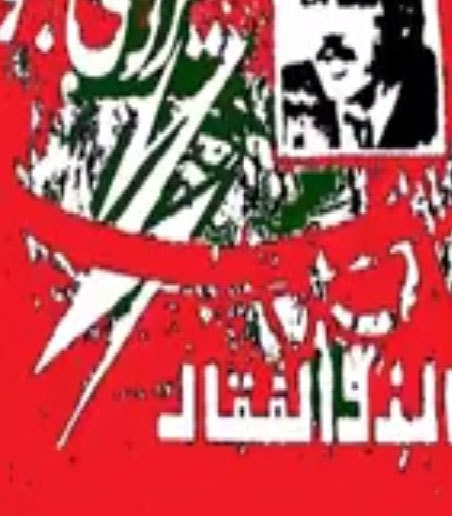
A 1980 AZO poster in Karachi with AZO chief, Murtaza Bhutto.
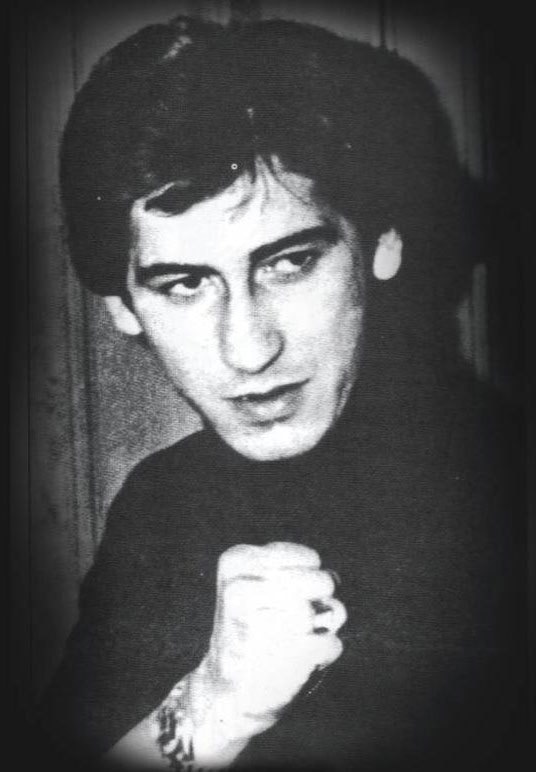
Shahnawaz.
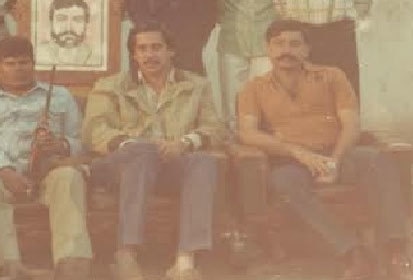
Murtaza (centre) with Tipu (right) in Kabul, 1981.
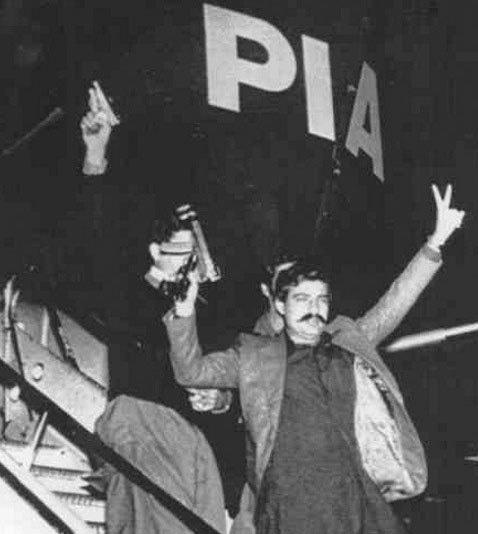
The hijacking.
Black Eagles (BE)
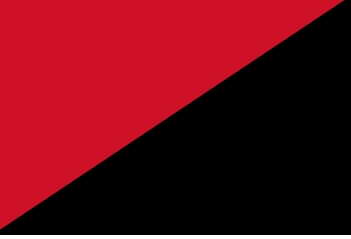
Black Eagles was a student organization formed in Lahore in 1980. Despite its militant name, BE was largely an outfit created to challenge the growing electoral influence of right-wing groups on campuses and oppose the Gen. Zia dictatorship. It also consisted former NSF members.
BE was rather successful in winning important posts in student union elections in Lahore. It was dissolved in 1987.[17]
Awami Tehreek (AT)
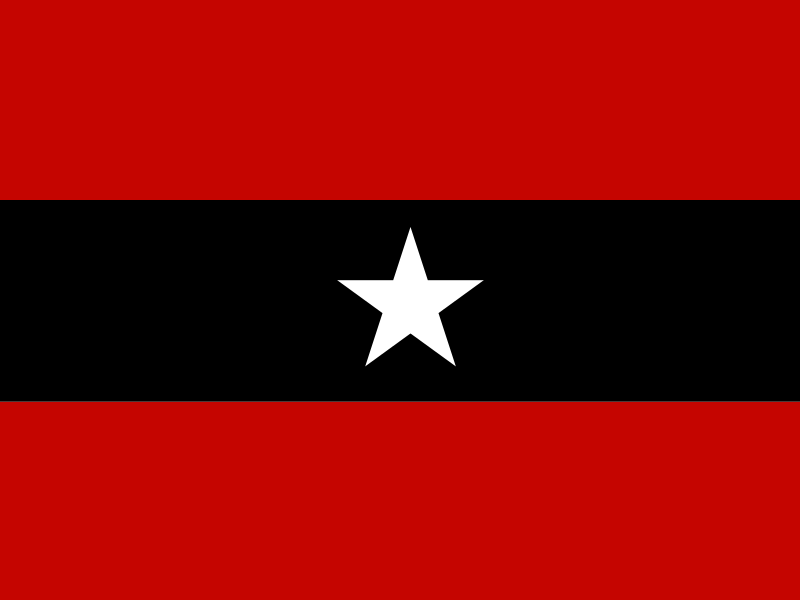
AT was formed in 1970 by Sindhi middle-class intellectuals and activists as a left-wing Sindhi nationalist party. The party was mainly driven by the Marxist Rasul Bux Palijo to challenge the ‘hegemony’ of progressive Sindhi nationalist parties which Palijo claimed were being controlled by feudal lords.
AT was most active during the PPP-led MRD (Movement for the Restoration of Democracy) protests against the Zia dictatorship. One of the most violent of these protest movements erupted in Sindh in which dozens of people were killed and hundreds were thrown in jail. AT was played an active role in this movement.
In 1985, AT became part of the Awami National Party (ANP) but soon departed. Though still active, AT is a pale reflection of its MRD days in the early 1980s. Recently the party has also been accused of ‘collaborating with conservative groups against the PPP.’[18]
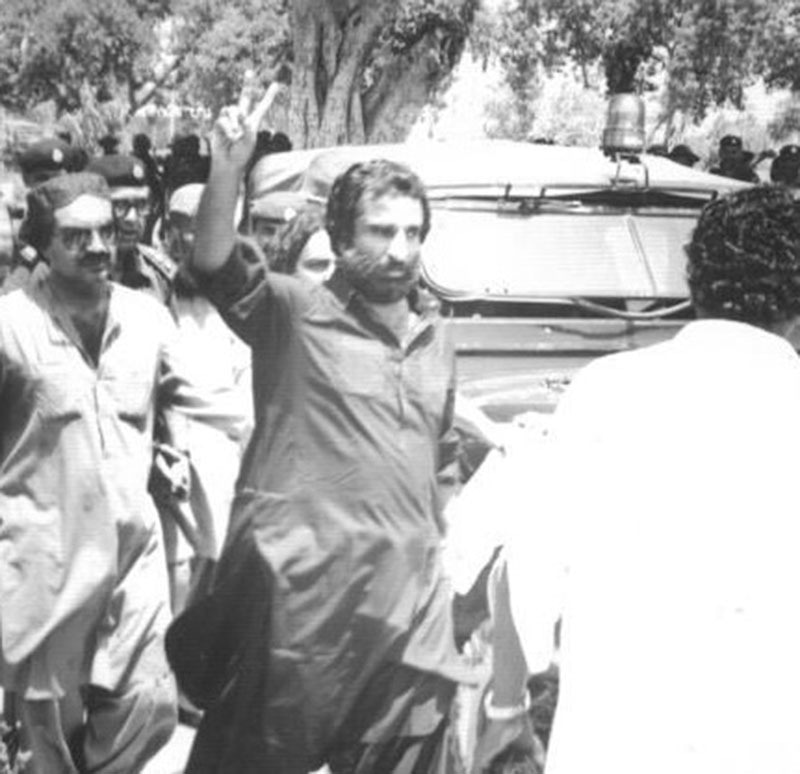
AT activists court-arrest during the 1983 MRD movement.
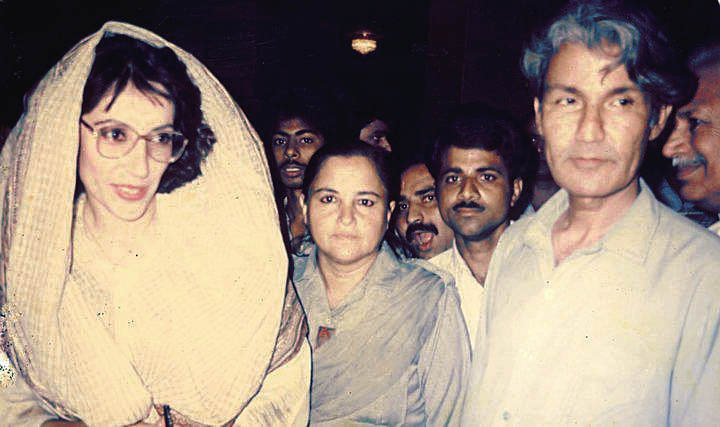
Rasul Bakhsh Palijo with PPP chairperson Benazir Bhutto in the 1980s.
Awami National Party (ANP)
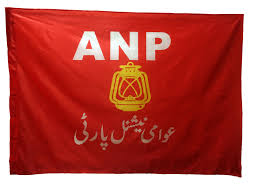
NAP-Wali which was banned in 1975 was revived in 1986 as ANP. Initially, like NAP, ANP too was a party of progressive Pashtun, Sindhi and Baloch nationalists. But by 1987, ANP had become a Pashtun nationalist outfit. It was led by veteran NAP and Pashtun nationalist leader, Wali Khan. It remains to be the largest Pashtun nationalist party in the country. Its members have often been targeted by relegious extremist groups.
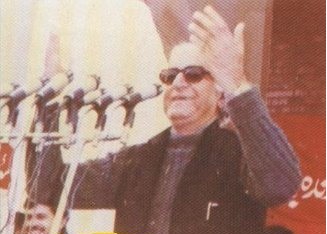
Wali Khan: ANP is formed, 1985.
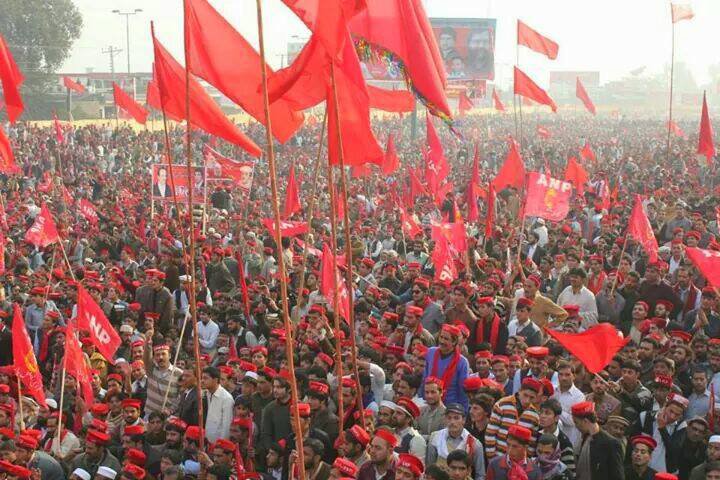
A 2017 ANP rally.
Pashtun Students Federation (PhSF)
Formed in 1968, PhSF was the student-wing of NAP-Wali. In 1986 it became the student-wing of ANP. Recently, however, ANP has invested more in the party’s new youth wing, the New Youth Organization.
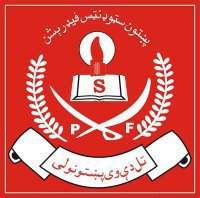
Awami Workers Party (AWP)
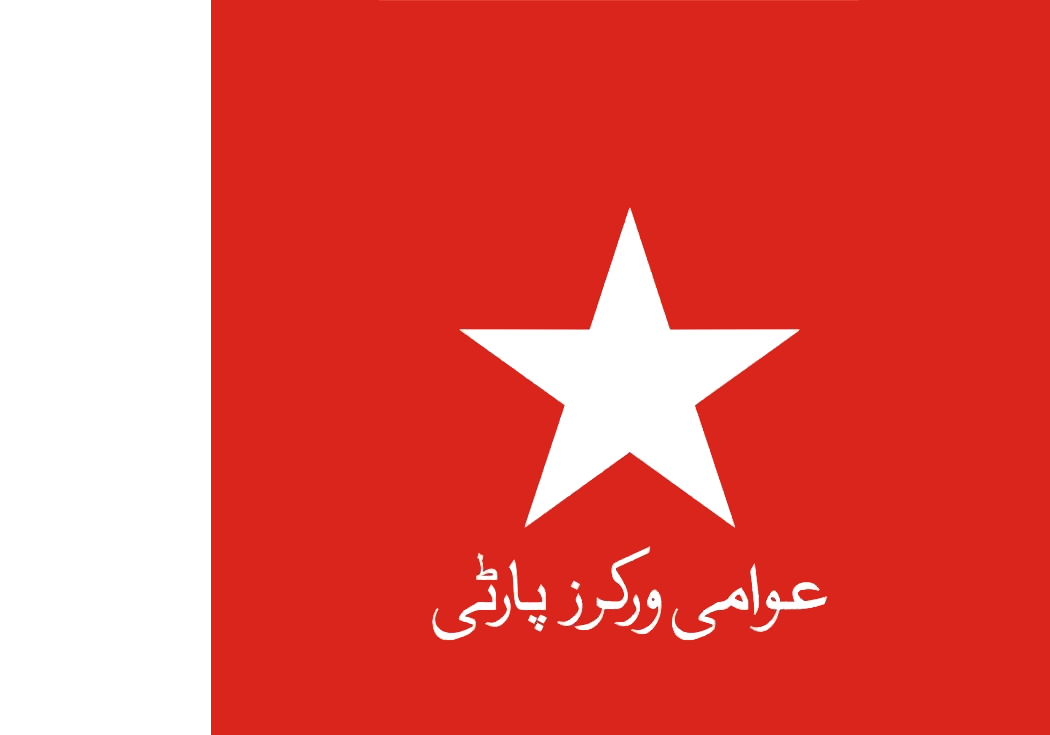
Formed in 2012, AWP is a socialist-democratic party which excels in taking up causes involving human rights, minority rights, women’s rights and religious extremism.
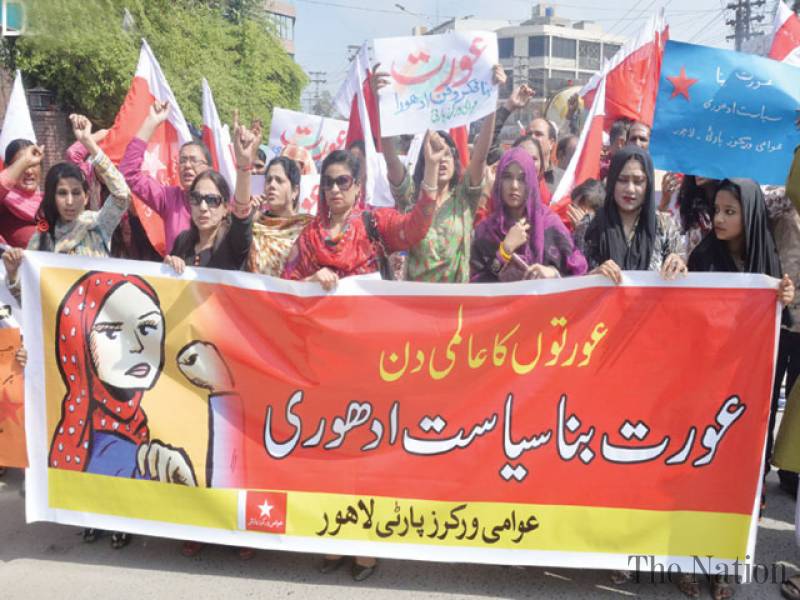
A recent AWP rally.
Sources:
[1] Communists in the Muslim League: Habib Manzer (JSTOR, 2008) p.563
[2] Ibid.
[3] Pakistan’s early communists: BH Qizilbash (Pakistan Today, May 27, 2018)
[4] TA Tahir: Political Dynamics of Sindh 1947-77 (Pakistan Study Centre, 2010)
[5] U Badruddin: Class Struggles in East Pakistan (Oxford University Press, 2004)
[6] Students movement of 1953 celebrated: Peerzada Salman (DAWN, Jan 11, 2010)
[7] S Akhtar Ali (Pakistan Economist, Vol:12, 1972)
[8] Ibid.
[9] SK Mazari: A Journey into Disillusionment (Oxford University Press, 1999)
[10] Business Recorder (Nov 25, 2013)
[11] PE Jones: Pakistan People’s Party: Rise to Power (Oxford University Press, 2003)
[12] KB Sayeed: The Nature and Direction of Change (Praeger, 1980)
[13] The Rolling Stone: Baber Mirza (Friday Times, May17, 2013)
[14] Friday Times, Oct. 31, 2014
[15] Raja Anwar: The Terrorist Prince (Verso, 1997)
[16] Ibid.
[17] The Economist (March, 1987)
[18] DAWN, Jan. 10, 2016
